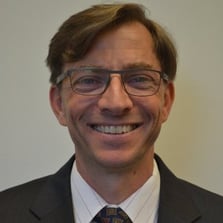
A solution is meaningless if it is not associated with a problem. Problems aren’t generic abstractions, but rather they impact specific people in specific ways. Our entrepreneurial journey begins only when we identify the “who” (whom we serve). Once we identify the people, we need to understand how we can improve their lives; that is, what benefits do they desire that they cannot economically realize today?
This is where bridge building comes in. A bridge connects two places that are separated by an insurmountable chasm. The entrepreneur’s solution bridges the gap between a customer’s current problem and the benefits they desire, enabling customers to realize benefits they could not previously afford or imagine.
Aspiring entrepreneurs are encouraged to keep the bridge analogy front and center as they develop solutions. If a clear link cannot be made between a specific customer’s problem and the benefits provided by the proposed solution, something is going wrong. This is particularly important for technical entrepreneurs as we are susceptible to becoming blinded by a solution’s sophistication and elegance, causing us to lose sight of the fact that we need to build a bridge between problems and benefits.
Additionally, there are two other areas of difficulty that we must consider. The first deals with getting the attention of those we want to help. Everyone finds more things interesting than they can focus upon in a given day. Our challenge is to demonstrate to our audience that we are worthy of their attention. We achieve this with a solid value proposition that concisely and quickly lets them know “what is in it for me” (WIFM). However, the value proposition is not the final product, but rather the first step on the journey to customer discovery. In essence, the value proposition is the key to your audience’s ear and attention.
Lastly, but equally important, is that the cost-benefit analysis must be considered as well. Most entrepreneurs, with a little practice, become skilled at quantifying the potential benefits of their innovation. Unfortunately, too many neglect analyzing the cost that this new innovation puts on the perspective customer. This leads to the unfortunate outcome of entrepreneurs being puzzled about why their masterpiece that creates so many benefits languish unadopted by the people it intends to benefit. The reason is that the entrepreneur failed to count the cost! If your innovation requires a user to do something different than what they do today (and it should), then there is a potential cost to switching. Cost is a curious beast, often hiding in the form of reduced convenience, difficulty of procurement, needing to change working procedure, and many more. It is the entrepreneur’s job to understand the cost their innovation imposes on the customer, and to ensure that the customer recognizes that the benefits produced exceed these costs.
With these things in mind, hopefully this equips the young entrepeneur with the right frame of mind to tackle the challenges that face them head-on and the tools necessary to break ground on a bridge to the land of benefits.
 Phil Marzolf has dedicated the last 3 decades of his professional life commercializing new technology. He led engineering teams at National Semiconductor, Maxim Integrated Products, and SUN Microsystems introducing first to market integrated circuits (IC) in the Ethernet, 3G cellular, and Server markets. He was CTO for nSerial, an angel-backed start-up focusing on 10Gb/s Ethernet, which was acquired by Intel. Subsequently, he held general management positions and led companies in the US and Europe in the communication and automotive segments.
Phil Marzolf has dedicated the last 3 decades of his professional life commercializing new technology. He led engineering teams at National Semiconductor, Maxim Integrated Products, and SUN Microsystems introducing first to market integrated circuits (IC) in the Ethernet, 3G cellular, and Server markets. He was CTO for nSerial, an angel-backed start-up focusing on 10Gb/s Ethernet, which was acquired by Intel. Subsequently, he held general management positions and led companies in the US and Europe in the communication and automotive segments.
For the past 5 years, Phil has focused on augmenting technical founders as they commercialize innovations through leading market discovery, market development, operations and early stage sales for their organizations. Phil’s current interest is on power-efficient hardware and intelligent software systems for Internet-of-Things (IoT) applications. Phil is currently Chief Commercialization Officer at Arieca, which is developing novel, state-of-the-art soft materials used in a variety of industries.
Phil was also an entrepreneur in residence (EIR) for the Big Idea Center.
Phil earned a BSEE from the University of Notre Dame, a MSEE from Santa Clara University, and a MBA from the Wharton School at the University of Pennsylvania.
Get in touch with Phil here.